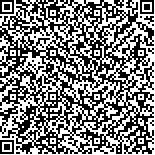王健,魏丹,谢肄聪.电针对气虚血瘀证大鼠脑缺血再灌注损伤后血管新生的影响[J].中华物理医学与康复杂志,2015,37(7):503-507
扫码阅读全文

|
| 电针对气虚血瘀证大鼠脑缺血再灌注损伤后血管新生的影响 |
|
| |
| DOI: |
| 中文关键词: 电针 脑缺血 内皮生长因子 内皮祖细胞 |
| 英文关键词: Eletroacupuncture Brain Ischemia Endothelial growth factors Endothelial progenitor cells |
| 基金项目:天津市卫生局中医中西医结合科研项目(11106) |
|
| 摘要点击次数: 3288 |
| 全文下载次数: 4701 |
| 中文摘要: |
| 目的通过动态观测气虚血瘀证大脑中动脉闭塞(MCAO)模型大鼠外周血内皮祖细胞(EPCs)数量变化以及海马区血管内皮生长因子(VEGF)的表达,探讨针刺疗法对气虚血瘀证大鼠脑缺血再灌注损伤后血管新生的影响。 方法将50只雄性SD大鼠按随机数字表法选取10只设为正常组,其余40只用大黄灌胃7d以建立气虚血瘀证模型大鼠,然后随机挑选10只设为假手术组,剩下30只大鼠采用线栓法建立局灶性脑缺血再灌注模型,剔除因造模麻醉死亡及造模后脑缺血再灌注导致死亡的大鼠,将造模成功的20只大鼠随机分为模型组和电针组,每组10只。造模成功后次日,对电针组进行针刺治疗,其余三组不做任何治疗。分别于造模后第1、3和7天,采用Basso-Beattie-Bresnahan(BBB)运动功能评分法对各组大鼠进行神经功能评定,并采集大鼠外周血进行流式细胞仪计数检测EPCs的数量,第8天处死大鼠取脑,用免疫组化法检测脑组织中内皮生长因子(VEGF)含量。 结果①正常组和假手术组大鼠BBB运动功能评分均为(21.00±0.00)分;造模后第1、3和7天,模型组大鼠BBB运动功能评分分别为(3.83±0.75)、(5.67±0.82)和(6.83±1.47)分,电针组分别为(4.50±1.05)、(13.67±1.21)和(20.00±0.89)分,2组评分均明显低于正常组(P<0.05),且模型组评分亦低于同时间点电针组,组间差异有统计学意义(P<0.05);随着时间的推移,模型组和电针组大鼠BBB运动功能评分均逐渐升高,且电针组大鼠各时间点BBB运动功能评分组内比较,差异均有统计学意义(P<0.05)。②造模后第1、3和7天,模型组外周血EPCs数量[(26.83±6.05)、(33.67±5.39)和(32.83±5.04)]明显少于同时间点正常组[(45.50±9.40)、(42.17±4.62)和(41.33±5.50)]、假手术组[(58.00±8.05)、(59.67±4.84)和(53.83±5.38)]及电针组[(66.17±4.36)、(127.50±73.75)和(55.00±35.15)],且组间差异均有统计学意义(P<0.05);模型组和电针组大鼠外周血EPCs数量均呈现降低后升高再降低的趋势,且各时间点电针组数量均高于同时间点的模型组(P<0.05)。③模型组和电针组大鼠海马区VEGF阳性细胞表达数[(21.17±3.19)%和(27.80±2.39)%]明显多于正常组[(14.20±3.70)%],且组间差异有统计学意义(P<0.05),且电针组亦明显多于模型组(P<0.05)。 结论电针治疗能够上调脑海马区VEGF蛋白表达,增加外周血中EPCs含量,促进血管新生和神经功能恢复。 |
| 英文摘要: |
| Objective To explore the effect of eletroacupuncture (EA) on angiogenesis after cerebral ischemia and reperfusion through observing the number of peripheral blood endothelial progenitor cells (EPCs) and the expression of vascular endothelial growth factor (VEGF) in the hippocampus. MethodsAmong 50 male Sprague-Dawley (SD) rats, 10 were randomly selected as a control group (CG). Qi deficiency and blood stasis were induced in the other 40 rats by intragastric administration of dahuang daily for 7 days. A model of focal cerebral ischemia and reperfusion injury was then created by thread-occlusion of the middle cerebral artery, except in 10 rats selected for the sham operation group (SOG) who received the same operation without tightening the thread. The successfully modeled rats were divided into a model group (MG, n=10) and an electroacupuncture group (EAG, n=10). The rats in EAG started acupuncture treatment the next day after modeling, while no treatment was given to those in the other groups. On day 1, 3 and 7 after the modeling, the neurological functioning of the 4 groups was assessed using Basso-Beattie-Bresnahan locomotion scoring and the number of EPCs in the peripheral circulation was detected by flow cytometry. On the 8th day, all the rats were decapitated and the VEGF expression was detected immunohistochemically. ResultsThe average BBB locomotion score of the EAG rose significantly from (4.50±1.05) on day 1, to (13.67±1.21) on day 3, and then further to (20.00±0.89) by day 7, significantly higher than that of MG at the same time points, but still significantly lower than that of the control group. The average number of EPCs in the peripheral circulation in the MG also increased from (26.83±6.05) on day 1 to (33.67±5.39) on day 3, and decreased to (32.83±5.04) on day 7 after modeling, significantly lower than that of the CG [(45.50±9.40), (42.17±4.62) and (41.33±5.50)], the SOG [(58.00±8.05),(59.67±4.84) and (53.83±5.38)] and the EAG [(66.17±4.36), (127.50±73.75) and (55.00±35.15)] at each time point. After occlusion, the average expression of VEGF-positive cells in the hippocampus of the EAG [(27.80±2.39)%] was significantly higher than that of the MG, and both were significantly higher than that of the CG. ConclusionsEletroacupuncture can up-regulate VEGF expression and EPCs in the peripheral blood in rats after cerebral ischemia-reperfusion, which can promote angiogenesis and neural functional recovery. |
|
查看全文
查看/发表评论 下载PDF阅读器 |
| 关闭 |
|
|
|